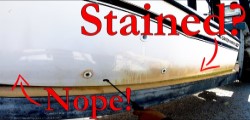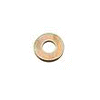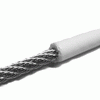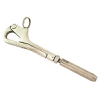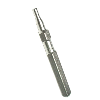There has been plenty of interest in recent years of replacing traditional PVC-coated steel lifeline wires with alternatives such as bare wire or low stretch, high tech rope.
|
Type
|
Pros
|
Cons
|
PVC-coated 7X19 wire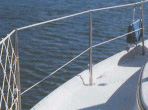 |
|
|
Uncoated 1X19 wire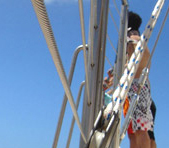 |
|
|
High Tech Rope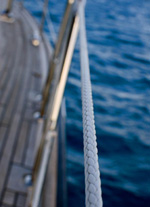 |
|
|
Using the chart above, you may be able to come up with your own opinion about whether bare steel or rope lifelines are right for you. However, here's a quick synopsis (in our opinion):
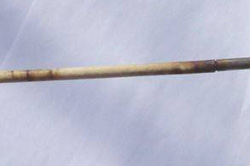 |
|
PVC coated lifeline past the end of its life
|
PVC Coated Line is best for cruisers
, particularily elderly boaters or ones with young children. This line won't do much for your boat's resale value if they are nearing the end of their lifespan since eventually they will turn yellow and can look terrible. Ocean racers should avoid these lines altogether since any damage is hidden. Overall, these lines require little maintenance. They may be the least strong option, but at least you won't hurt yourself if you fall on them!
Uncoated 1X19 Wire is best for ocean going boats, or modern/stylish sailboats with teak decks. These lines look fantastic and are super strong. However, we pity the poor person who falls on them at full force, as the small diameters can cut you, sometimes badly. Mind you, a bad cut is much better than falling overboard while at sea! These lines may chafe your expensive genoa or spinnaker sheets, but anti-chafing equipment (or even PVC water hose slipped over trouble areas on sheets) can prevent these problems.
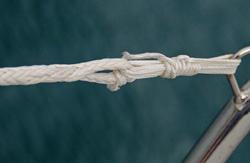 |
|
Lashing the end of rope lifelines
|
High Tech Rope is best for lightweight racing boats, old fashioned boat styles, and DIY boaters (self sufficient do-it-yourself'ers). The weight savings of high tech rope are sometimes worth it, but the ability to adjust, remove or repair lines yourself is the big advantage. For those with wooden boats, or unusual colours, the colour choices of high tech rope will help you find the look you're going for. Will you be boating in remote areas? At the very least, consider carrying lengths of small diameter Spectra as a back up; stainless steel wire can be very expensive in certain parts of the world... and swaging? Forget about it!!

